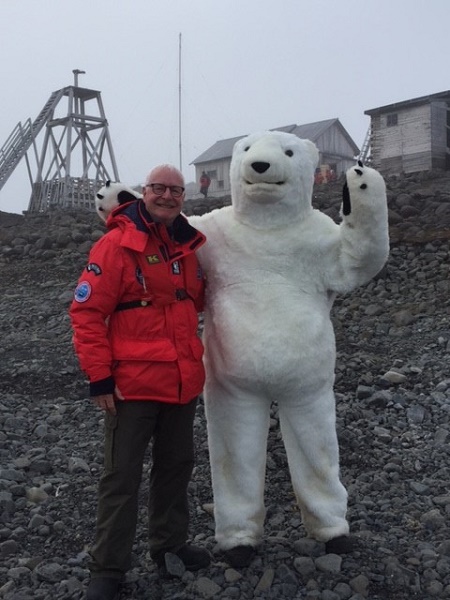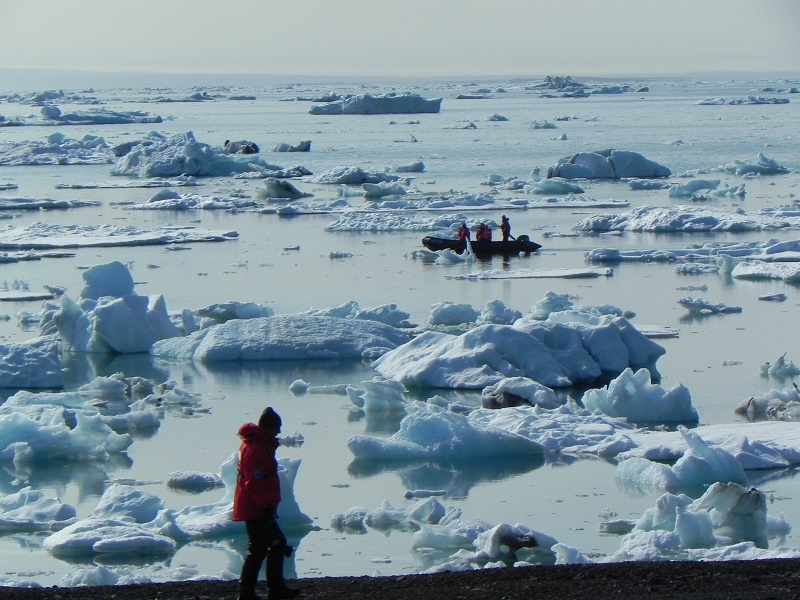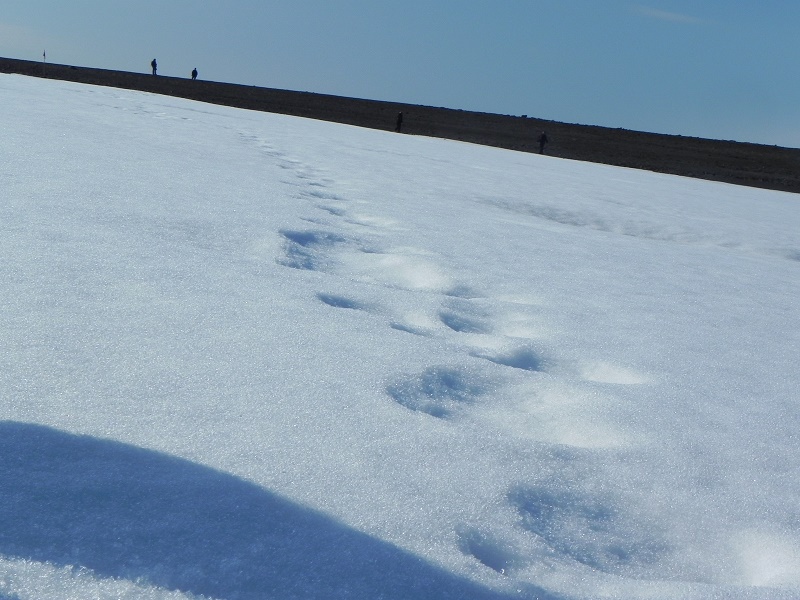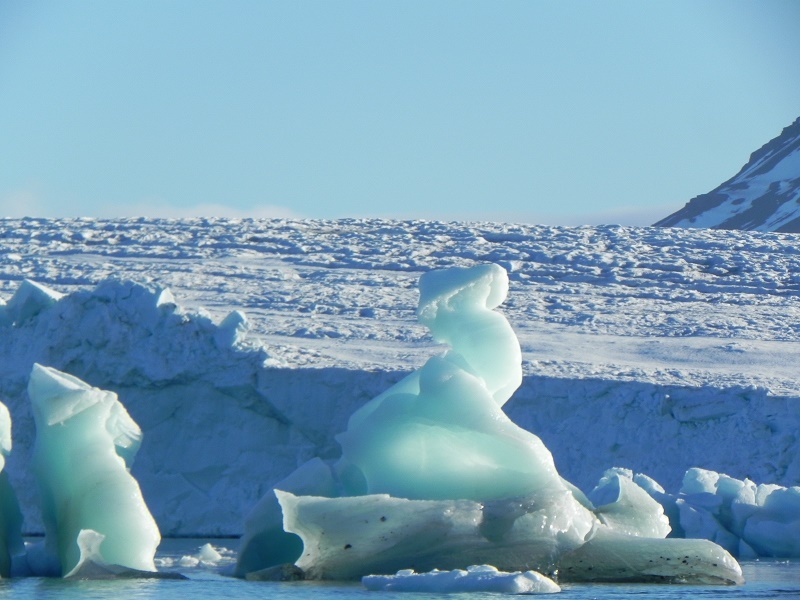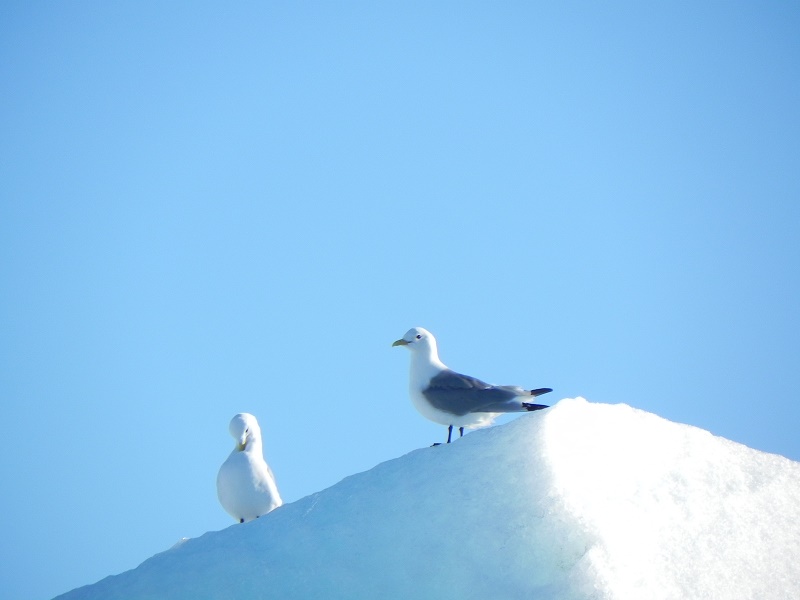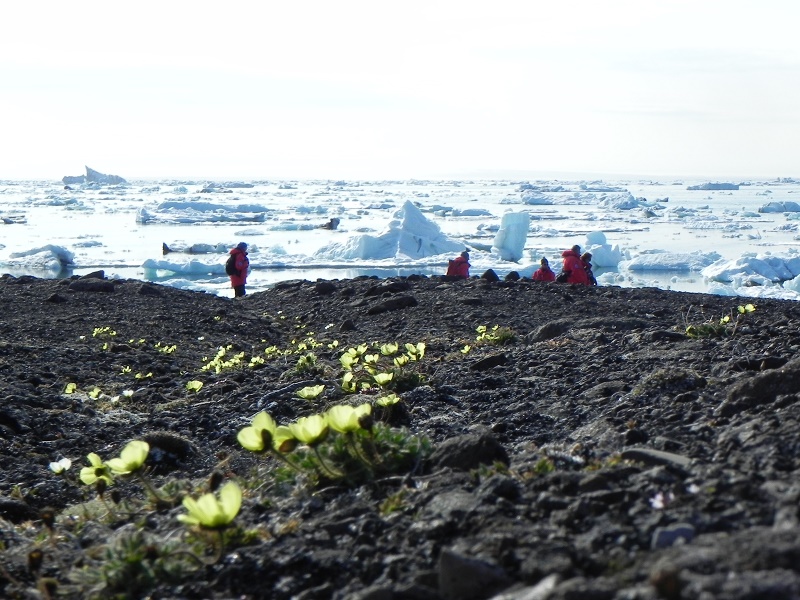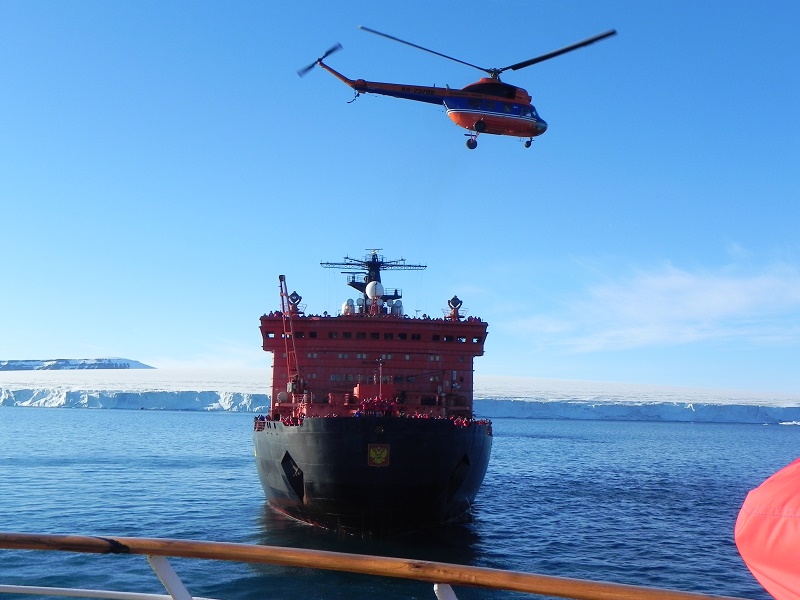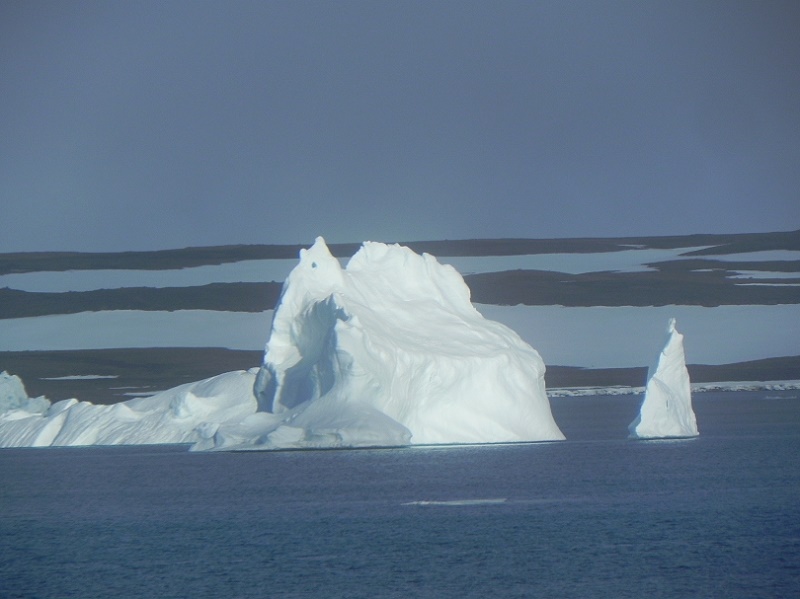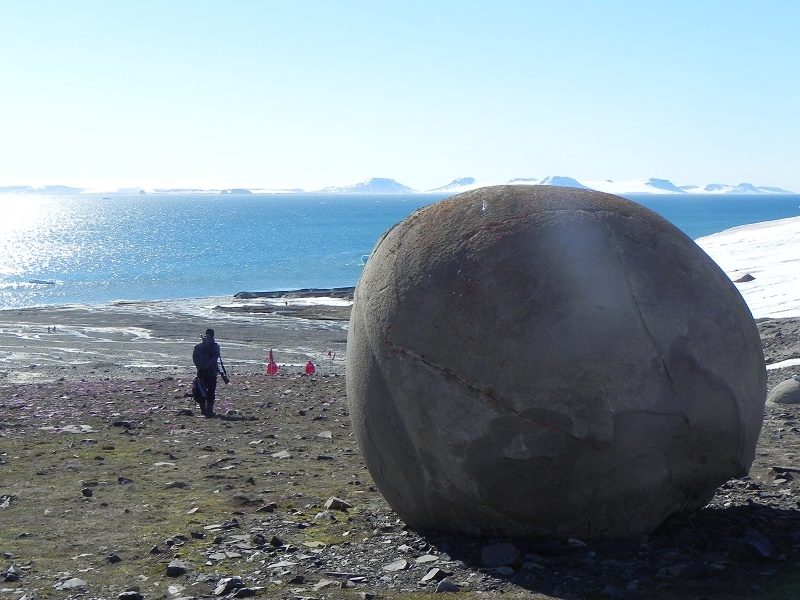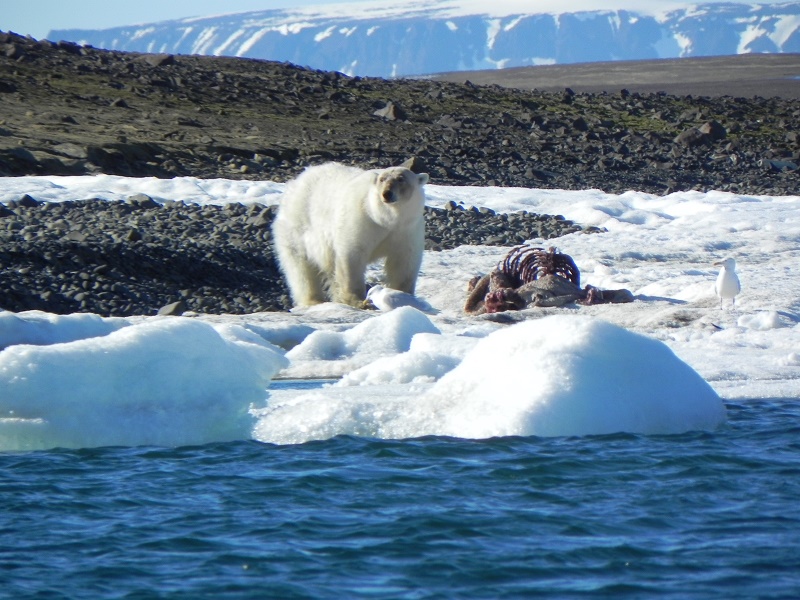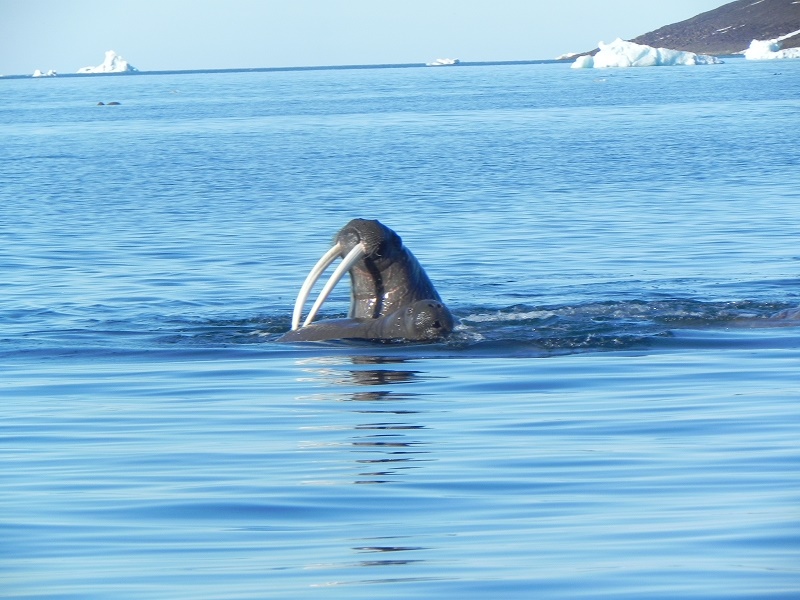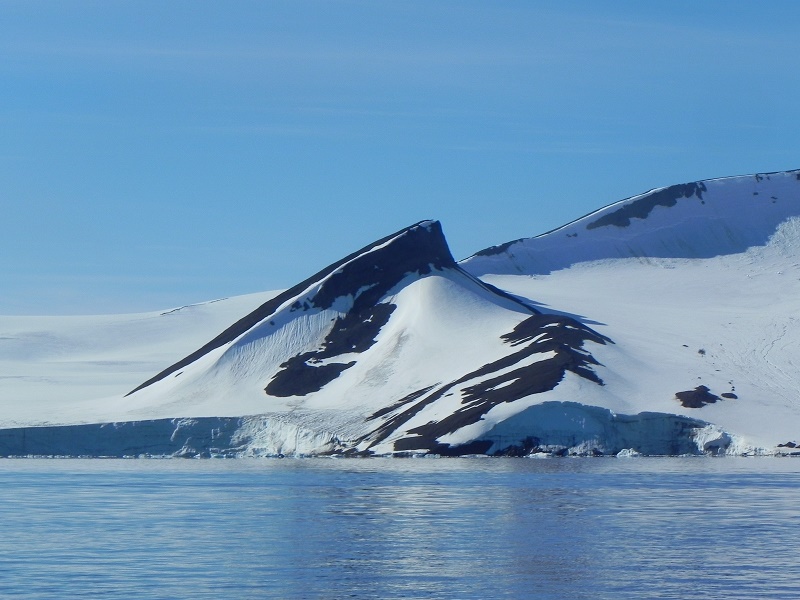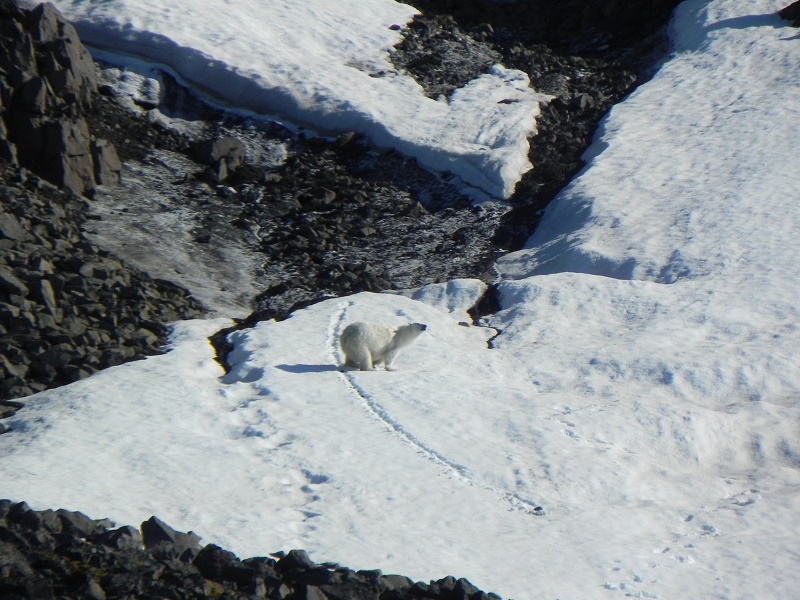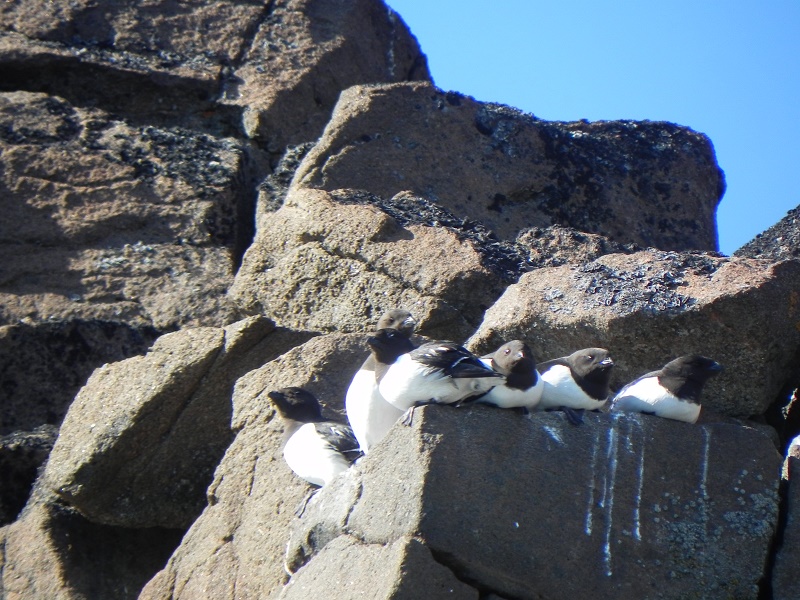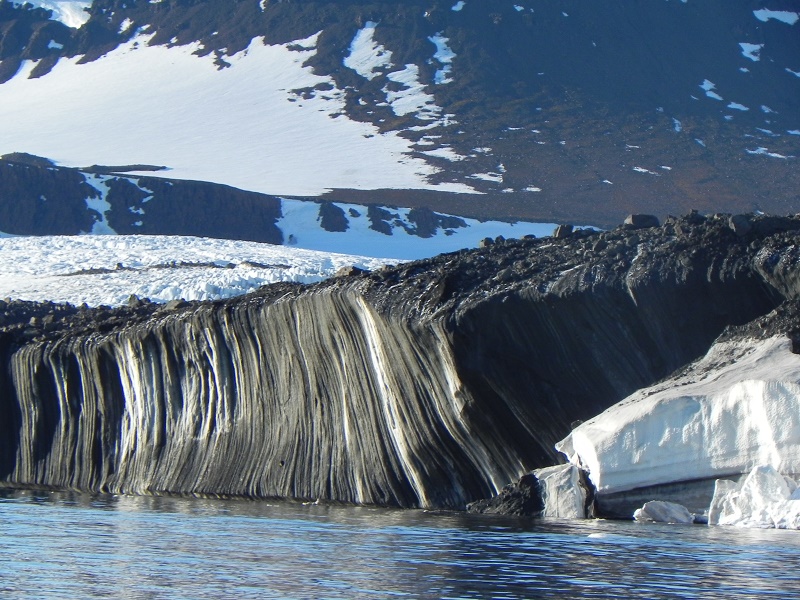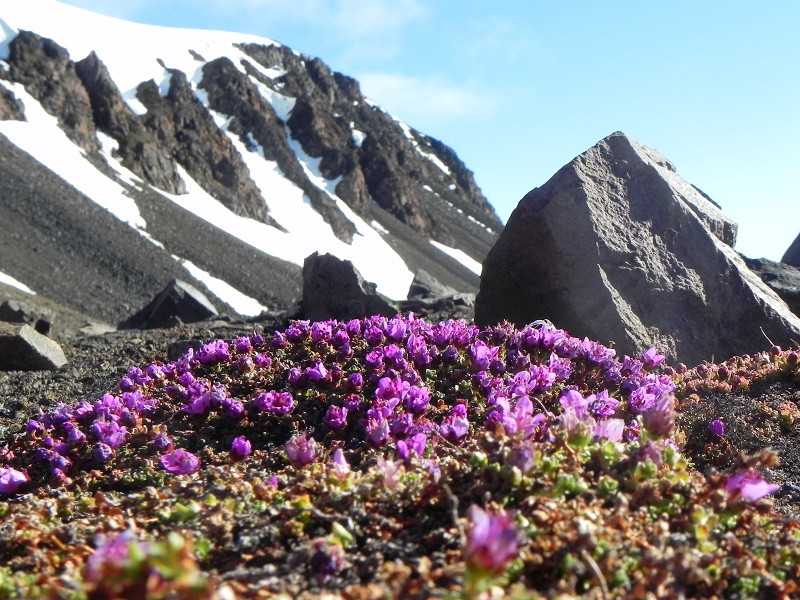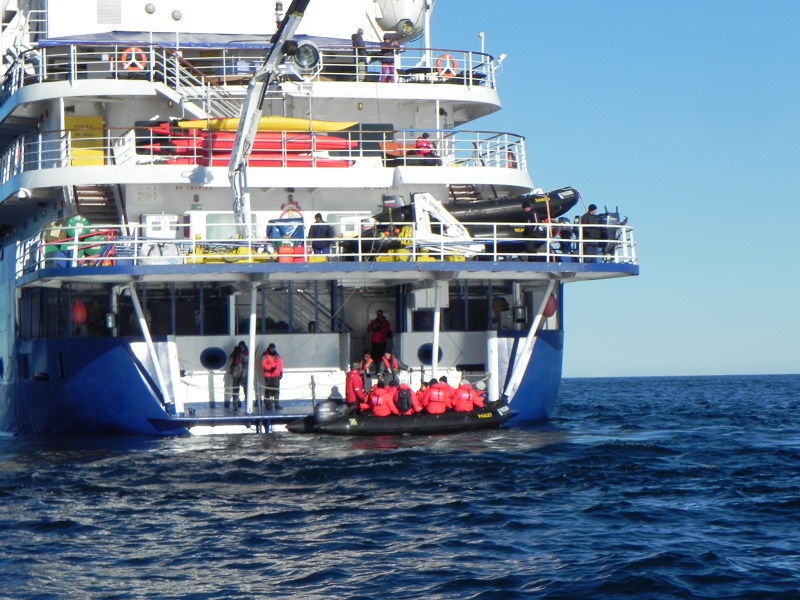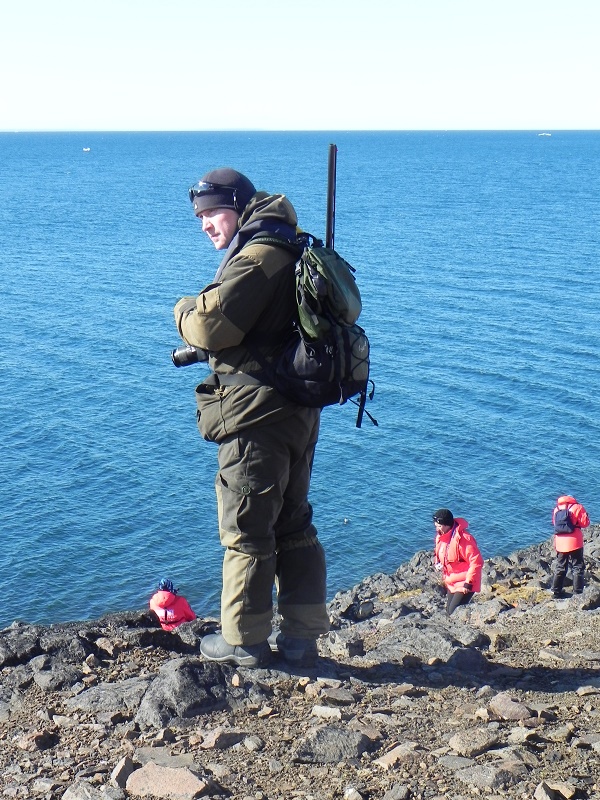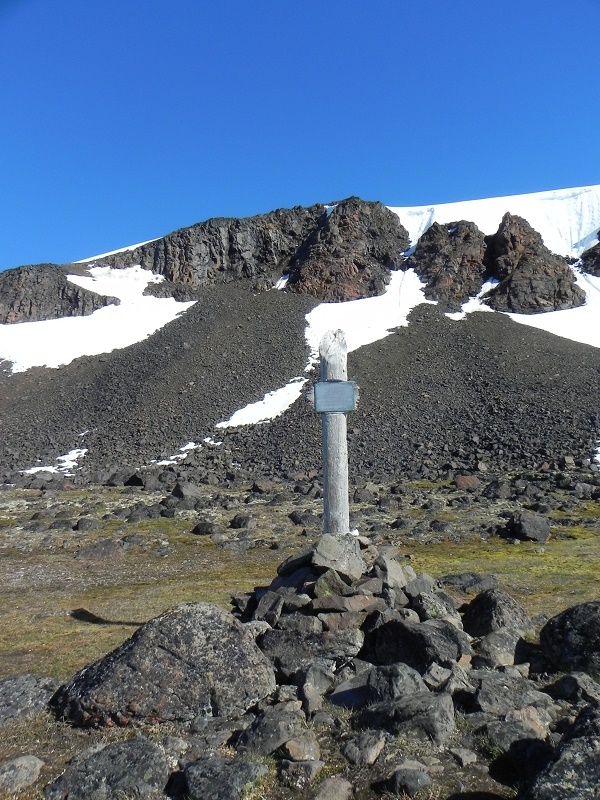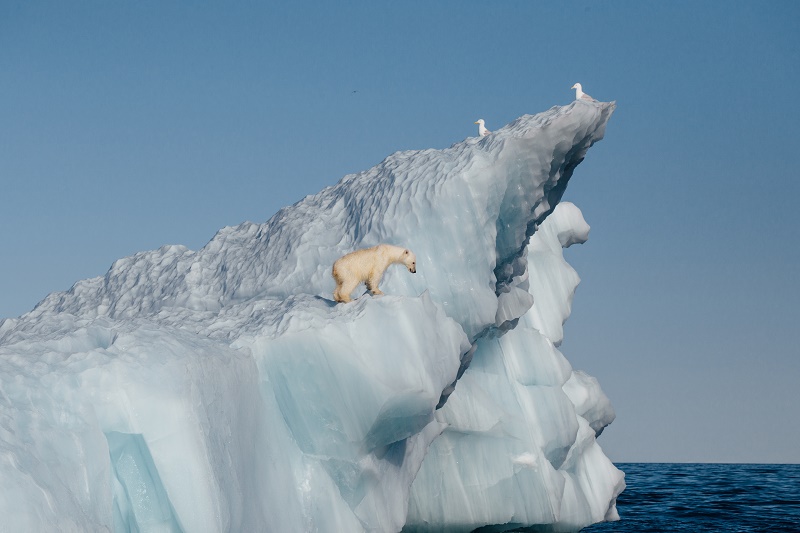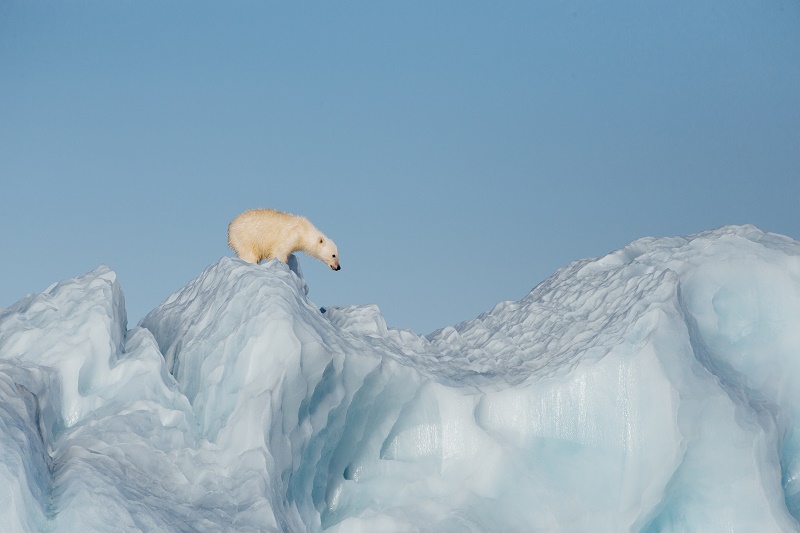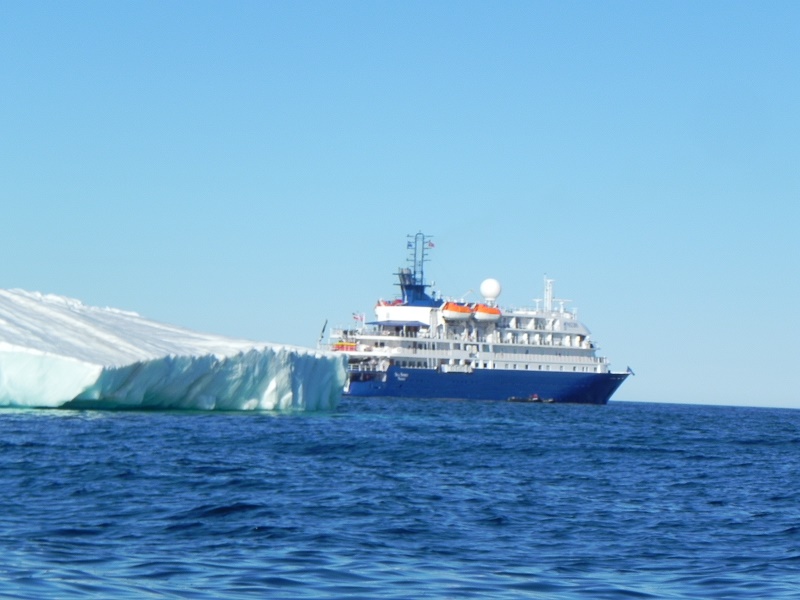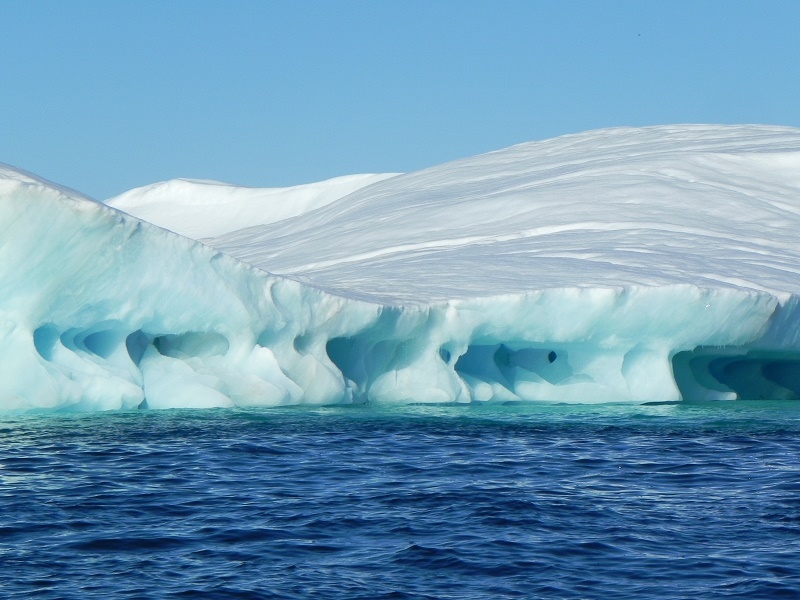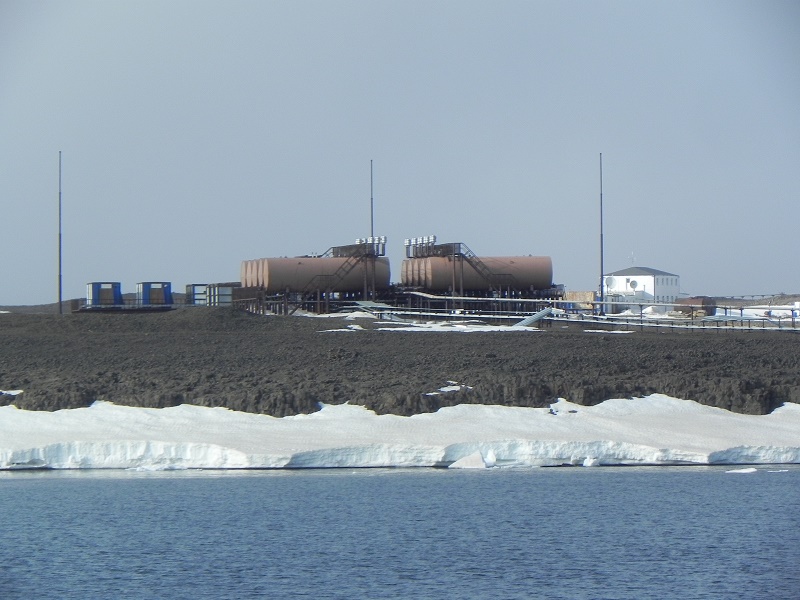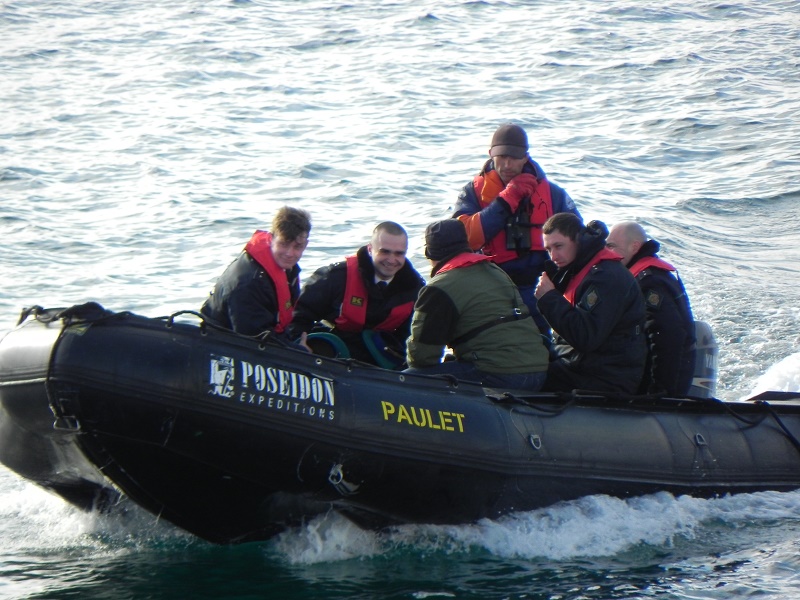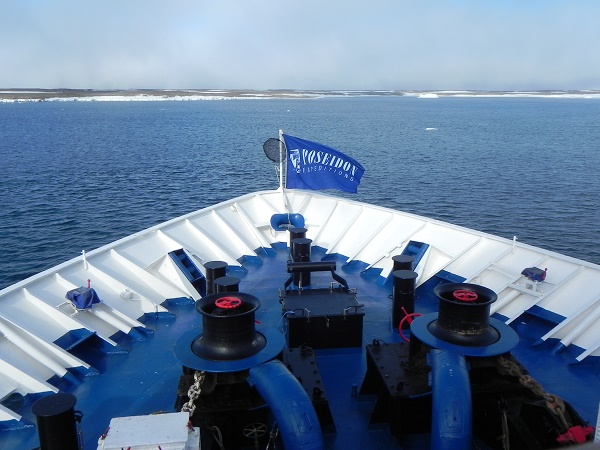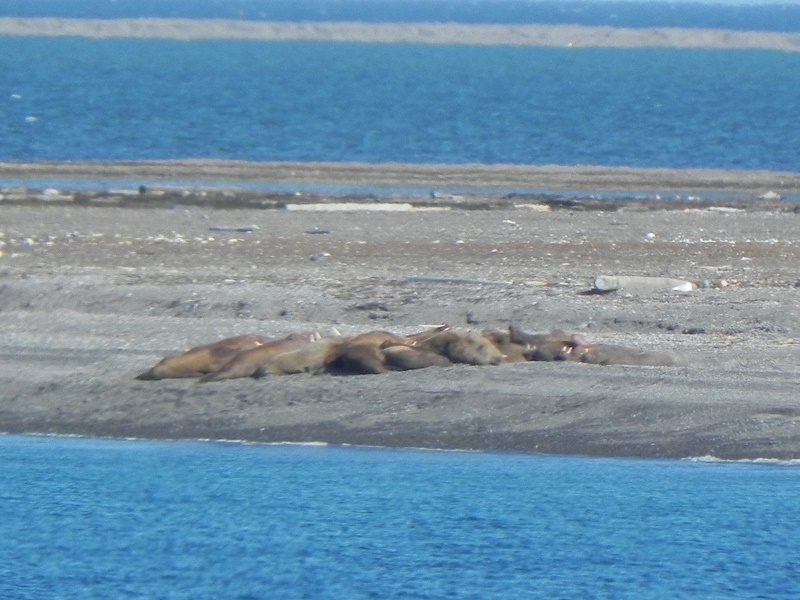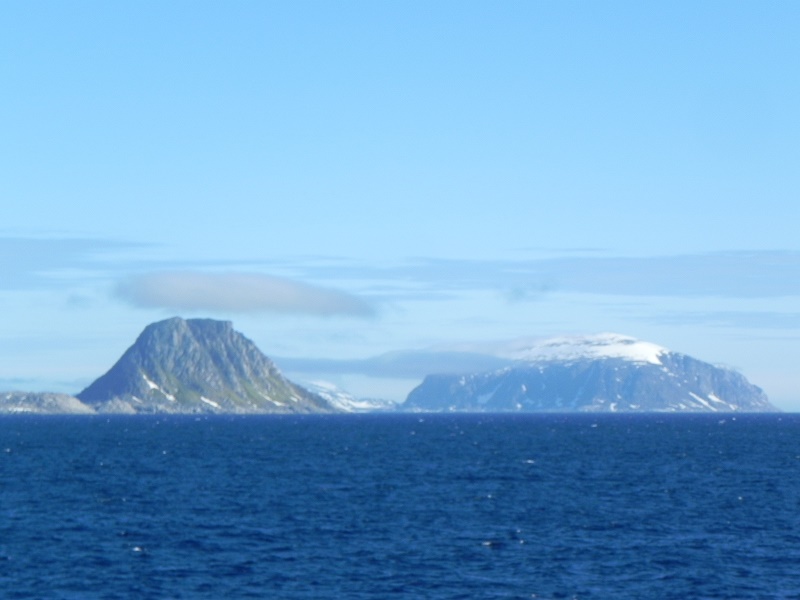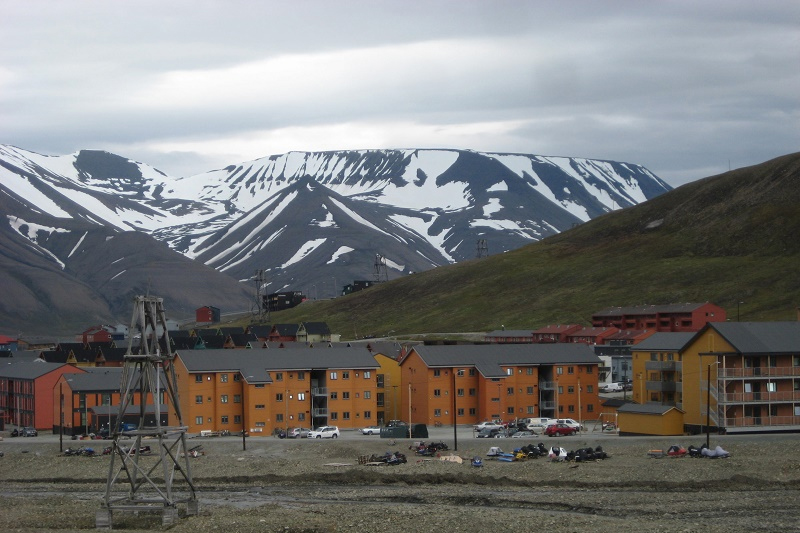Recently, we’ve been giving John the opportunity to tell us lots about what happened during his recent time at Franz Josef Land. This Russian archipelago just seems to keep on giving, as you can discover for yourself when you embark on one of the Arctic holiday cruises we offer.
Day 10
Friday. This morning, for the first time during this expedition, we woke to cloudy, overcast skies, but at least it wasn’t foggy. We were anchored off Rubini Rock on Hooker Island, home to thousands of seabirds, where we watched Brünnich’s guillemots, kittiwakes and little auks vying for space on narrow ledges and crevices, amongst a cacophony of sound. Especially recognisable were the ‘kitt-e-wake’ calls – I never realised that the name was onomatopoeic.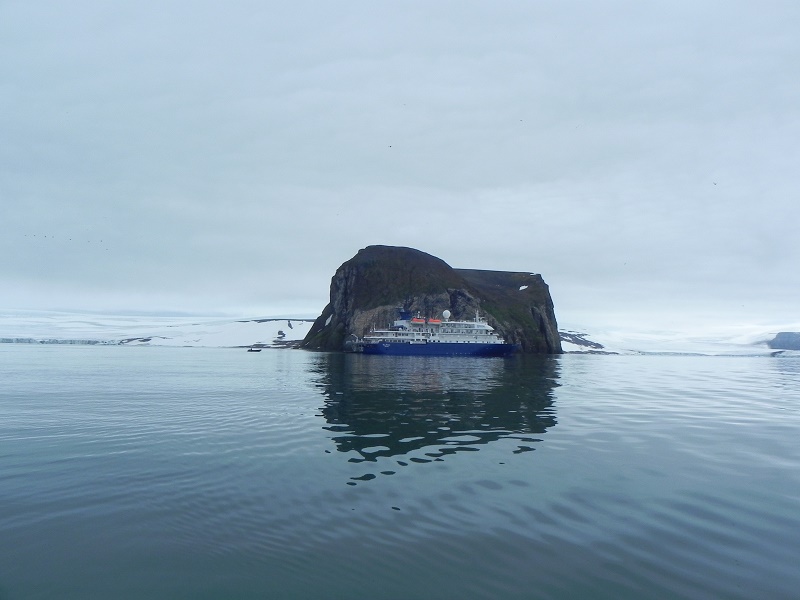
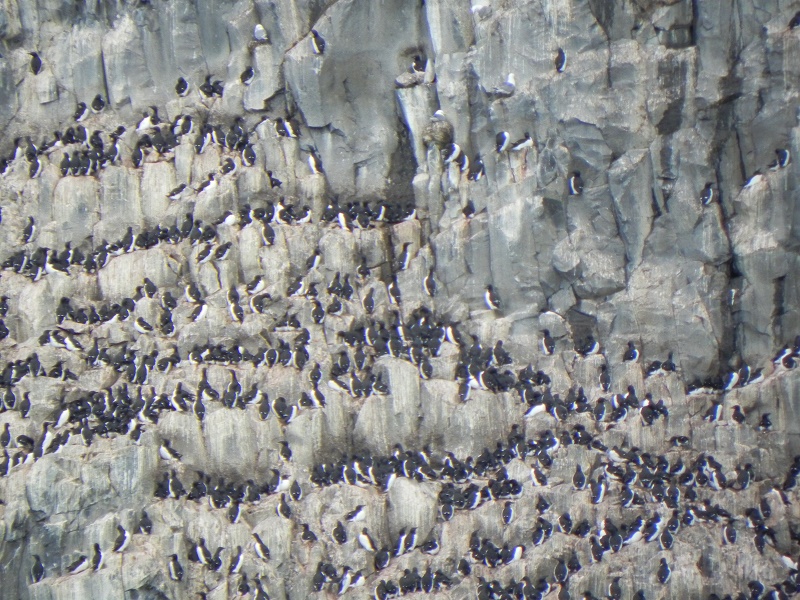
The outcrop is basalt and full of amazing geological strata and shapes, especially the classic hexagons. We spent ages on the Zodiac around the base of the Rock and offshore, where we tried to sneak up, with the outboard off, on guillemots and kittiwakes perched on floating ice. We did manage to get pretty close, too, before the former dived and the latter just scattered into the air.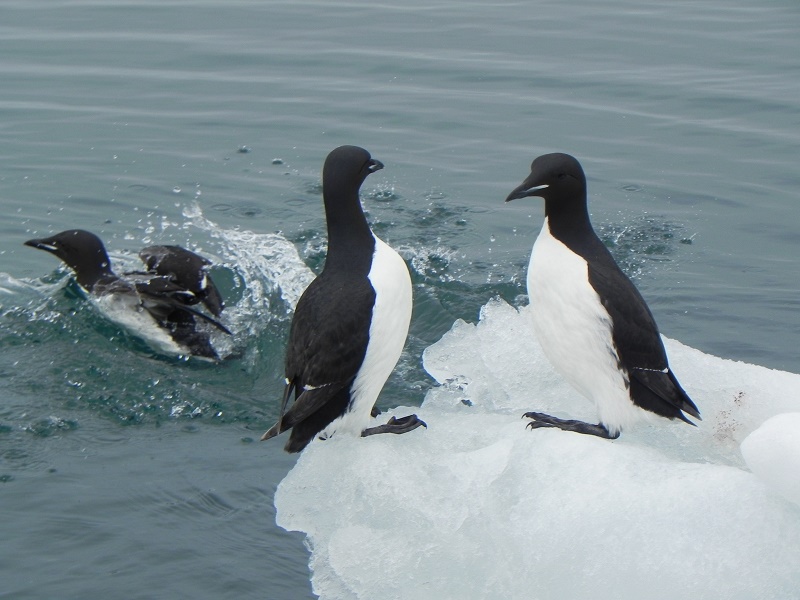
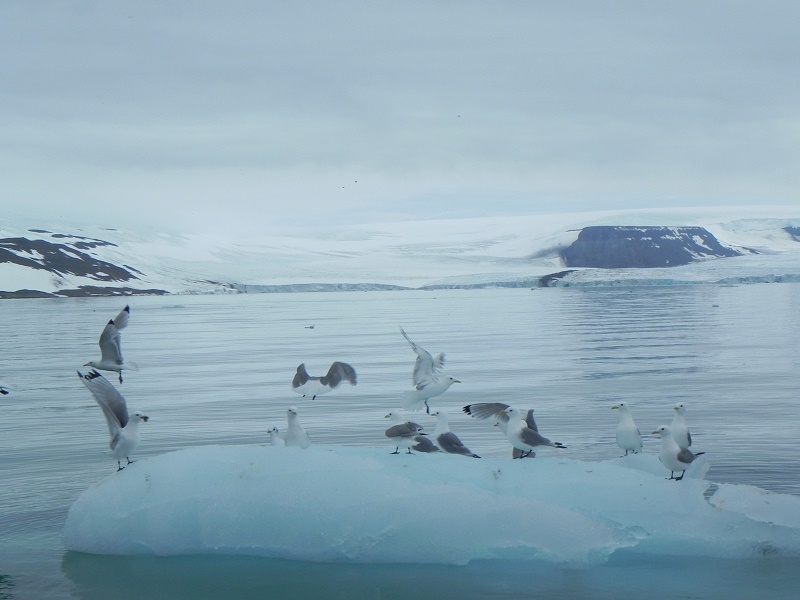
Fascinating remnants of Soviet history
On the opposite side of the bay, Bukhta Tikhaya, or Calm Bay, are the remains of a Soviet weather station, which was operational from 1929 until 1959. It is now manned during the summer by a small team from the Russian Arctic National Park Service, which is gradually restoring the wooden buildings into safe condition as a historical monument.
We went ashore there this afternoon for a look around and – considering they really don’t get any tourists, just us once this year and the 50 Years of Victory four times – received an enthusiastic welcome from staff. One staff member was dressed in a polar bear costume, while another was attired as a postman standing by the original letterbox.
They do have a postal service here, so we sent postcards home – they will be picked up by the icebreaker in a couple of weeks. Then, the fog rolled in and we were hurried back to the ship, which was now invisible from the shore. Our driver said that these conditions were actually the norm for Franz Josef Land and we had just been incredibly lucky over the last few days. We weren’t complaining!
Meeting a true pioneer in polar exploration
We have also been enjoying a series of talks from members of the expedition team on history, geology, fauna and flora, etc. One speaker was Felicity Aston, who I vaguely recognised when we boarded. Then, when she started her talk, I remembered why. She had given a talk at the Birdfair in Rutland a couple of years ago.
She is a real polar explorer and is the first (and only) woman to have crossed Antarctica solo and unsupported – she skied from the Ross ice shelf, via the South Pole, to the Ronne ice shelf. Her talk was about how she coped physically and psychologically – and even though I had heard it before, it was still fascinating and quite inspiring. She is really interesting to talk to, too.
So that night, I was in bed without a view for the first time – just a blanket of fog…
